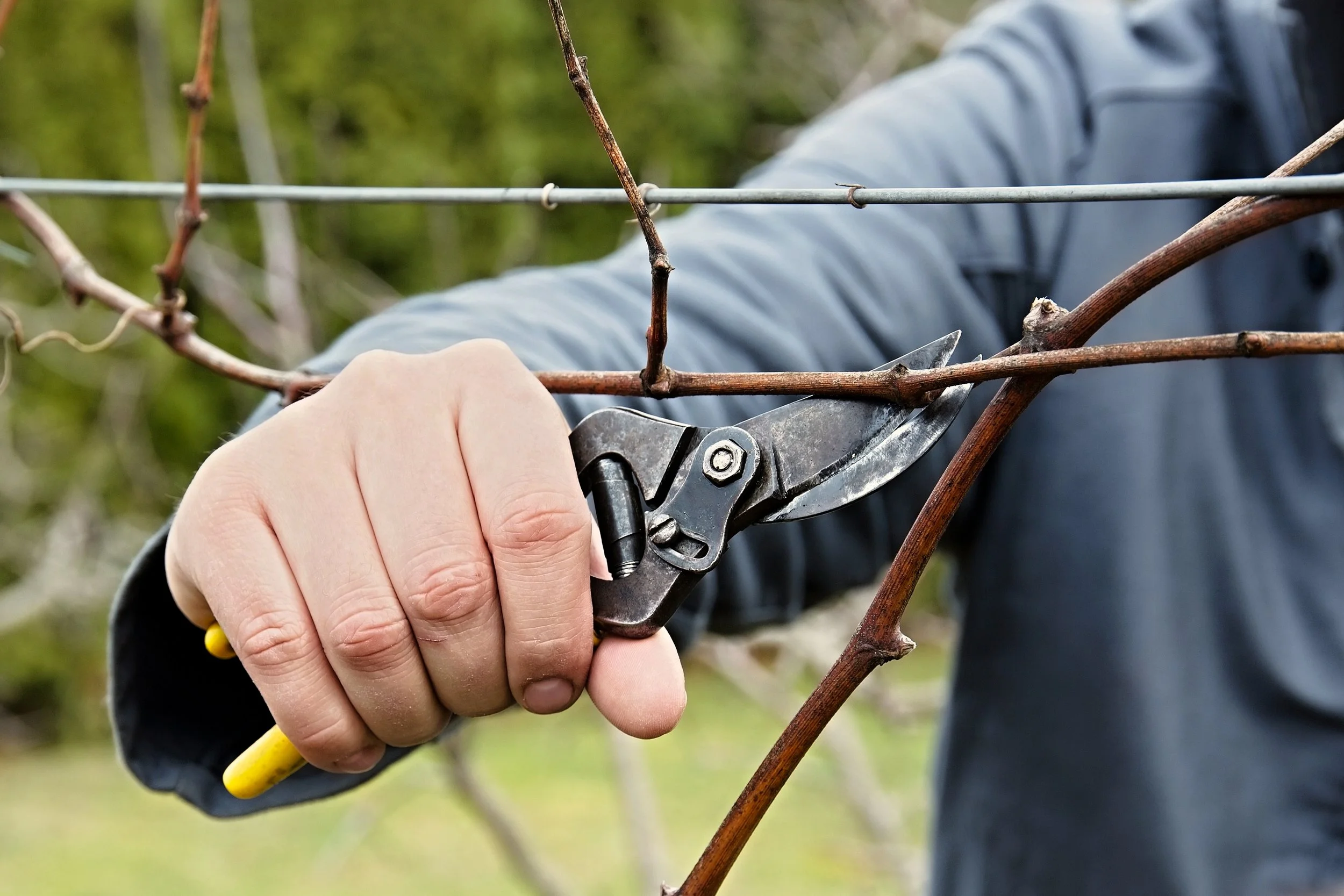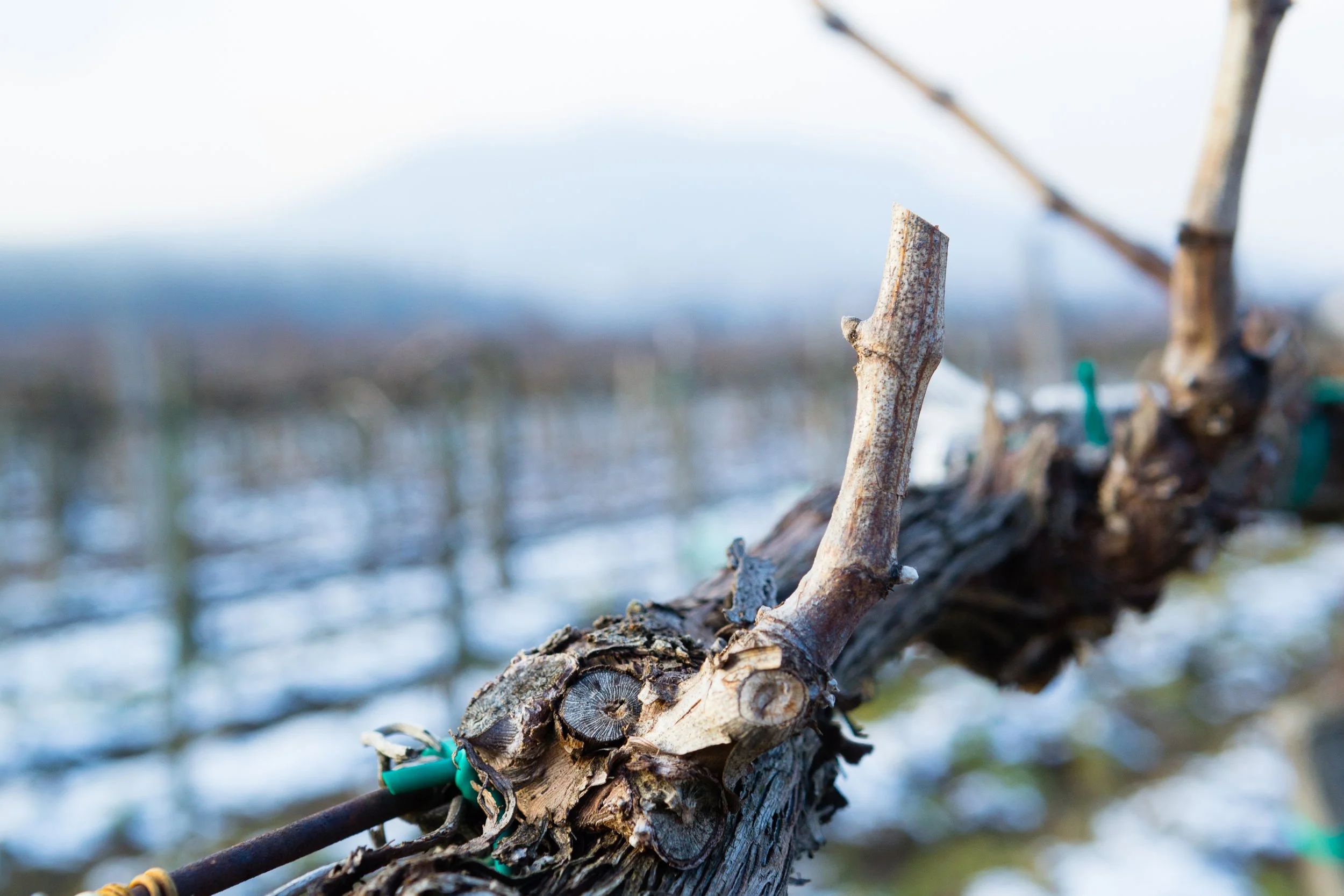Pruning: A Picture of Hope
A few months after my mom died, my sister and I were together in the car, and our route home took us past the hospital where we had stood vigil together as Mom slipped away from us. We both saw the building at the same time, and our tears started to flow.
I felt ambushed by grief and angry that Mom had died too young. We reached for each other’s hands and tried to comfort each other with the hope of heaven. Yes, I believe in heaven–like Mom believed in heaven. She used to raise her eyebrows and say, “It’s gonna’ be way different than what we think!” That’s a topic for another time, but that day, in the car, our conversation took a turn to how hard it is to hold on to hope in the here and now.
There in the car, we each began to share personal family issues that made us feel hopeless and, at the same time, we noticed parts of our lives that felt hopeful. We kept tipping into despair while grasping for something that felt elusive.
Honestly, I’ve struggled to find a grounded and stable hope lately. The world is swirling with traumatic events, and more personally, I recently lost a major client which has made me feel hopeless. Simultaneously, I have a lot of good things going on at work and in our family which makes me feel hopeful. Is it possible that hope is simply the sum total of maintaining a balance between these two opposing feelings? If that’s true, how does hopelessness fit into hope? When I’m feeling hopeless all I want is a lifeline to hope. Brené Brown says, “We need hope like we need air.”¹ Indeed, hope breathes life into our weary souls.
“We need hope like we need air.”
When I need to understand something complex, I often go to the vineyard. Walk with me, and let’s have a chat.
A winter vineyard, like today’s, tends to look quite dead and rather hopeless, as if some giant toddler had come along and poked a bunch of sticks into the ground. There are no leaves, and the branches are cut back to nubs. Even the soil between the vines looks unkempt and full of weeds.
Let’s pause and look a little closer.
Every branch that bore fruit this past year has been pruned back. If the vine could talk, we could imagine it describing adversity, sadness, and excruciating discomfort in the pruning process. Perhaps, to the vine, pruning feels like wounding or like all hope is lost. There certainly is no evidence of fruitfulness.
But, if we lean in…
We can see tiny, brown buds left where the old cane was cut off. You see, the vineyard workers very carefully and intentionally left two “buds of hope” as they cut back the vine. Inside those innocuous, barely visible buds a whole cosmos of leaves, tendrils, shoots, and fruit is patiently waiting to burst forth and produce the next harvest.
Pruning is a beautiful picture of hope. While it encompasses all the feelings of hopelessness, it is a purposeful, loving action with a powerful image of hope embedded in the buds.
Brene Brown says, “Hope is a function of struggle – we develop hope not during the easy or comfortable times, but through adversity and discomfort.”² Brown believes hope is a cognitive process or way of thinking – not an emotion – that can be learned and developed over time. So, hope is both a noun and a verb. It is a character trait that can be developed and an action that can be implemented.
“Hope is both a noun and a verb. It is a character trait that can be developed and an action that can be implemented.”
This is where my sister and I were confused. We were focused on our emotions, but hope is an attribute or an action… a character trait we can develop by exercising it in the midst of our sadness or challenges. As I look back on my journey towards hope after Mom died, and in other difficult seasons, I have learned to implement a helpful strategy consisting of three movements that nudges me towards hope.
Pause: Eventually, after fully grieving, we must get off the despair merry-go-round. The chaos of life inevitably becomes clearer when we are not in the middle of it. It’s imperative to stop, rest, and observe for as long as possible, much like the vine that takes an extended rest during winter, during which the clarity of pruning prepares it to produce the next season of fruit.
Protect: Protect your mind, heart, and emotions from believing some circumstance is permanent or pervasive. During the seasonally cold temperatures of winter, the sap falls into the protective trunk of the vine, providing the perfect time to carefully prune that which is no longer fruitful.
Persist: Keep trying! Don’t give up! Get up when you get knocked down. Remember that hope is developed through adversity. Vines that survive multiple winter seasons are more mature and produce better fruit which ultimately makes the best wine.
“Our fruitfulness in life depends on our consistent journey towards maturity in hope. ”
What are the tiny, brown buds of hope in your life?
Join me in my daily practice to pause, protect, and persist as I look for glimmers of hope!
Let me know your thoughts in the comments, or schedule a call to chat in person. I’d love that!
Brené Brown, Atlas of the Heart: Mapping Meaningful Connection and the Language of Human Experience (Random House, 2021), 97.
Brown, Atlas of the Heart, 101.


